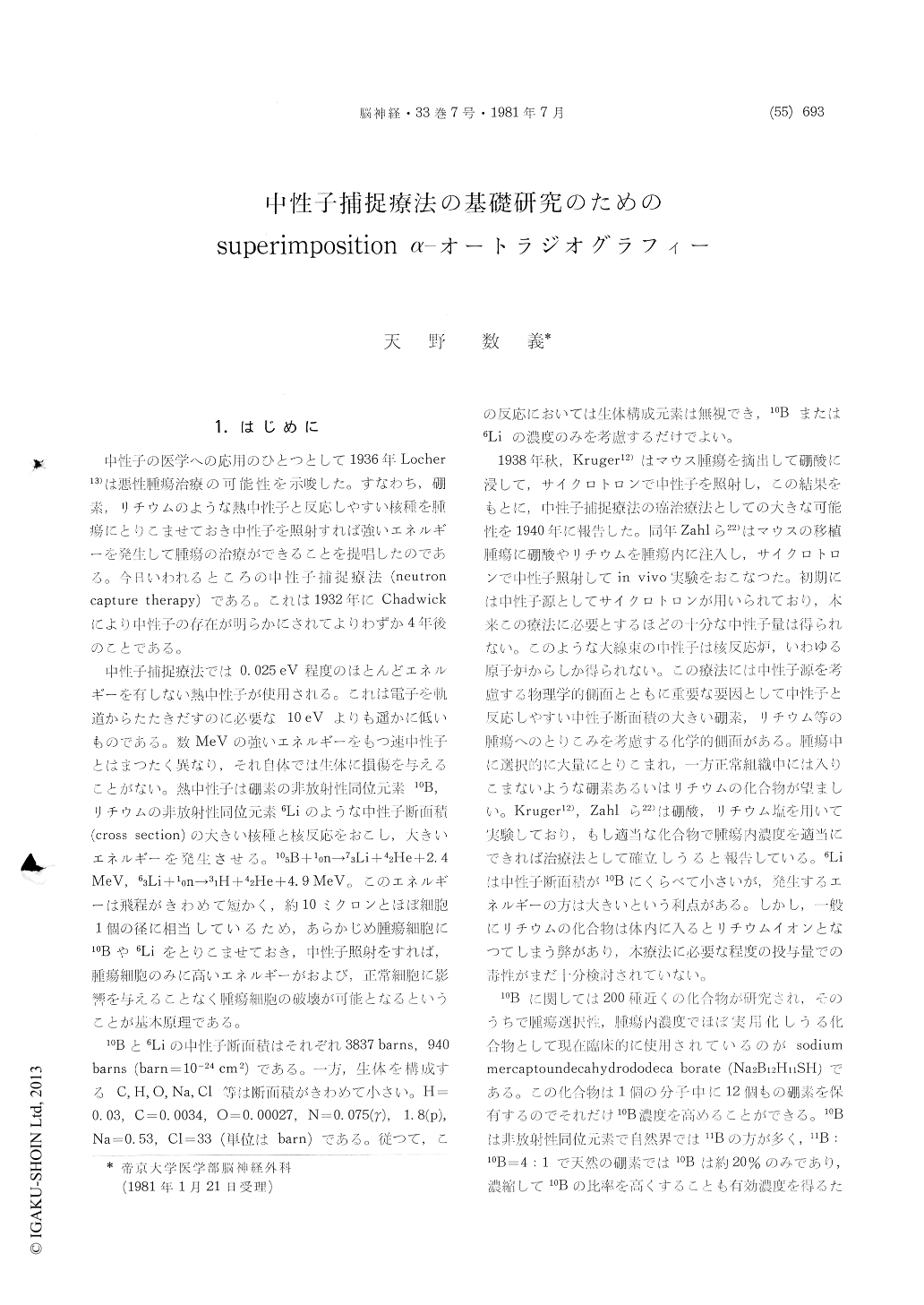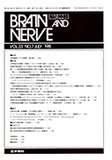Japanese
English
- 有料閲覧
- Abstract 文献概要
- 1ページ目 Look Inside
1.はじめに
中性子の医学への応用のひとつとして1936年Locher13)は悪性腫瘍治療の可能性を示唆した。すなわち,硼素,リチウムのような熱中性子と反応しやすい核種を腫瘍にとりこませておき中性子を照射すれば強いエネルギーを発生して腫瘍の治療ができることを提唱したのである。今日いわれるところの中性子捕捉療法(neutron capture therapy)である。これは1932年にChadwickにより中性子の存在が明らかにされてよりわずか4年後のことである。
中性子捕捉療法では0.025eV程度のほとんどエネルギーを有しない熱中性子が使用される。これは電子を軌道からたたきだすのに必要な10eVよりも遥かに低いものである。数MeVの強いエネルギーをもつ速中性子とはまつたく異なり,それ自体では生体に損傷を与えることがない。熱中性子は硼素の非放射性同位元素10B,リチウムの非放射性同位元素6Liのような中性子断面積(cross section)の大きい核種と核反応をおこし,大きいエネルギーを発生させる。105B+10n→73Li+42He+2.4MeV,63Li+10n→31H+42He+4.9MeV。このエネルギーは飛程がきわめて短かく,約10ミクロンとほぼ細胞1個の径に相当しているため,あらかじめ腫瘍細胞に10Bや6Liをとりこませておき,中性子照射をすれば,腫瘍細胞のみに高いエネルギーがおよび,正常細胞に影響を与えることなく腫瘍細胞の破壊が可能となるということが基本原理である。
Since Locher suggested the possibility of neutron capture therapy, a number of investigators have been making efforts to establish clinical application of this treatment. For success of this therapy one of the keys is to develop a proper boron compound with selective accumulation and high concentration in the tumor.
So far, sodium mercaptoundecahydrododecaborate, Na2B12H11SH is the best candidate for this purpose with its high concentration and selectivity shown by chemical analysis.
Nevertheless, histological study of boron uptake to know fine distribution in tissue is inevitable for evidence of effectiveness of clinical therapy. Cytological effects in neutron capture therapy largely depend on close association of B-10 with the tumor cell. B-10, being non-radioactive isotope, can not be used as a tracer for autoradiographical study of boron distribution in tissue. Instead, α particles produced by (n, α) reaction can be used for autoradiography which demonstrates not only location of boron in tissue but tracks by α particles expected to occur in actual neutron irradiation.
Dielectric organic polymer has been calling at-tention for its ability to register heavy particles which was utilized for α autoradiograpy.
Autoradiography by use of plastic film without nuclear emulsion has advantages; (1) simple pro-cedures, (2) no darkroom needed, (3) a lower back-ground obtainable, (4) little influence of temperature and moisture, (5) long standing material and so on.
The disadvantage of this procedure is that tissue sections are easily damaged by strong alkalinity used for chemical etching. To solve this problem an overlapping histologic technique was worked out, permitting one to determine the relation of the heavy particle tracks to the intra and extracel-lular structures.
Na2B12H11SH, a boron compound already in practi-cal use, has been restudied by using this new technique. Autoradiograms showed favorable results with abundant α tracks over the tumor tissue in close relation to the cells and with veryfew tracks over the normal brain parenchyma.
This technique is a useful means not only for further development of boron compounds but for other α emitters.

Copyright © 1981, Igaku-Shoin Ltd. All rights reserved.


